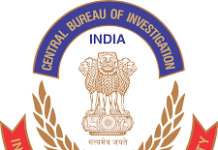
According to AIIMS Forensic Chief Dr. Sudhir Gupta, Coronavirus does not stay active in nasal and oral cavities 12 to 24 hours after the death of an infected individual, making the possibility of infection from the deceased extremely unlikely.
The Department of Forensic Medicine at AIIMS completed a pilot study on COVID-19 positive medico-legal cases that were exposed to post-mortem during the last year.
“Around 100 bodies were re-tested for coronavirus infection in an interval of 12 to 24 hours after death and the result was negative. The virus does not remain active at all in nasal and oral cavities 24 hours after death,” Dr Gupta told news agency PTI.
“The risk of transmission of coronavirus 12 to 24 hours after the death of an infected person is highly unlikely,” he said.
Nasal and oral cavities should be sealed to avoid leakage of body fluids, and other orifices or punctures arising from catheter insertion, drains, and tubes should be disinfected, he added.
People touching such bodies should also wear safety gear such as goggles, gloves, and PPE kits as a precaution.
Collection of bones and ashes is completely safe as there is no risk of transmission of infection from the mortal remains, Dr Gupta said.
“The study was conducted in the interest of preserving the dignity of the dead,” he stated.
Invasive procedures should not be used for forensic autopsy in COVID-19 deaths, according to the ICMR’s “standard recommendations for medico-legal autopsy in COVID-19 deaths,” published in May 2020. Mortuary workers are vulnerable to potentially hazardous health hazards related to organ fluids and secretions, even after taking all measures.
The absence of a post-mortem will deter contamination among surgeons, mortuary workers, police officers, and anyone else involved in the dead body disposal chain.
If at all possible, non-invasive autopsy procedures, as outlined in the guidelines, should be used to avoid the possibility of infection spreading to mortuary workers, police officers, and contamination of mortuary surfaces, according to the guidelines.
If the autopsy surgeon believes that without dissection, he would not be able to determine the cause of death or any other relevant problem, he can continue with minimally invasive/limited internal dissection.
The dissection, however, must be done “while bearing in mind that performing an autopsy is a high-risk operation that may be as dangerous as any other procedure conducted on the body of a COVID-19 patient,” according to the recommendations, which also mention the steps to take while conducting an autopsy, such as using proper infection control measures.
Along with visual inspection, various photos, and verbal autopsy (as portrayed by WHO), the post mortem should be performed strictly avoiding any intrusive surgical operations and avoiding splashing of body fluids interaction with staffs, body handlers, and doctors performing autopsy, according to the protocol for conducting forensic autopsy.




